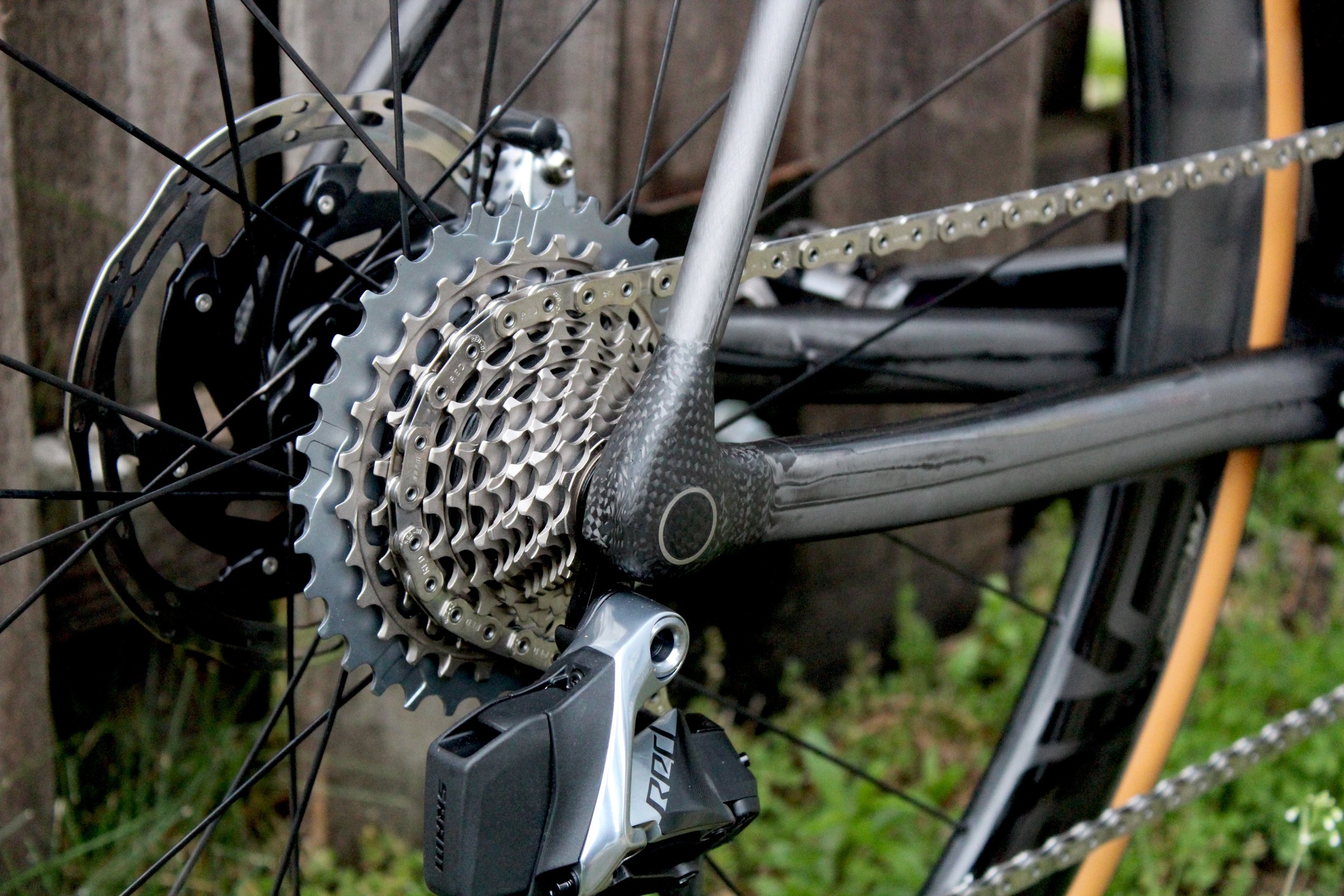MANAGING DRIVETRAIN WEAR.
MANAGING DRIVETRAIN WEAR
Over the past three decades we have seen the number of cogs on the rear of a bike increase from 7 to 8 to 9 to 10 and now 11 - arguably with 12 on the horizon. As the number of gears have increased the spacing between cogs has decreased. As a result chains are thinner than ever before. Chain wear now happens more quickly.
The upside to shorter chain life is replacement happens more frequently preserving chain rings and cassettes. In the long run this is a cost savings given that today's cassettes and chain rings (especially in the high-end) are more expensive than ever. Inside the studio we use a digital measurement tool to measure chain wear. This tool allows us to accurately check where the chain is within it's expected lifespan. Typical lifespan for a chain these days is 1000-1200 miles.
When a rider continues past the replacement window the chain wear will transfer to chain ring and cassette components and expedite wear throughout the entire system. Our advice as the season's miles continue to climb is have the chain wear checked periodically and stay on top of the service intervals. In the end you'll prolong the life of the drivetrain and save some money in the long run.

